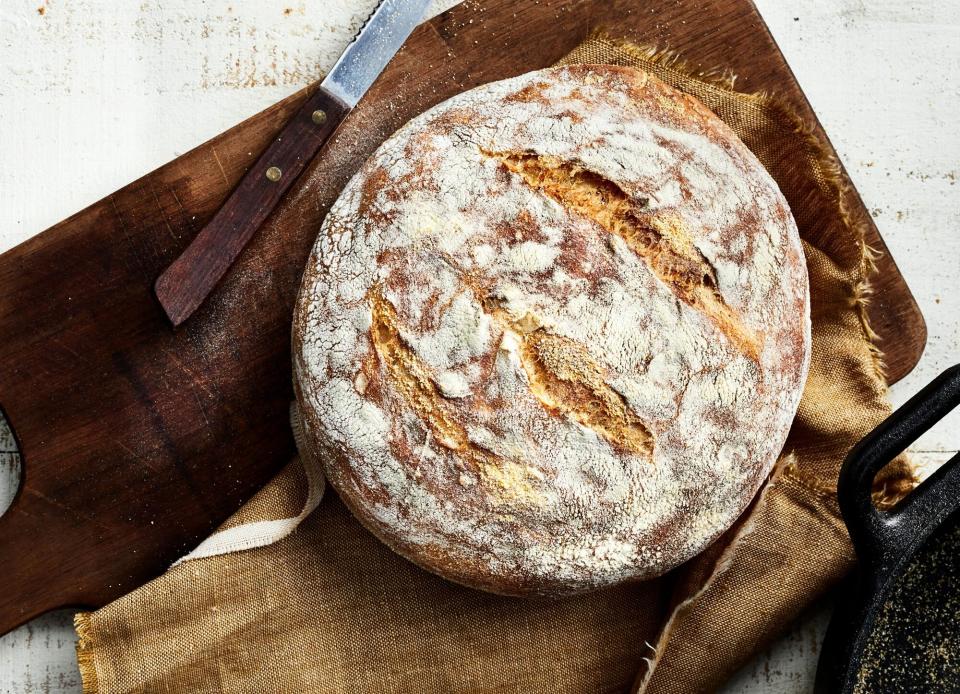How To Bake With Yeast When You're a Total Beginner
At its core, baking relies on a series of chemical reactions—from gluten development to leavening, baking is a true science. Understanding the science behind baking will help you hone your skills and ultimately become a better baker. Today, we're diving into one of the trickiest factors to master: Fermentation.
According to Oxford Languages, fermentation is defined as: "The chemical breakdown of a substance by bacteria, yeasts, or other microorganisms, typically involving effervescence and the giving off of heat." Fermentation occurs in a variety of settings, from brewing beer or kombucha to baking bread. But we're here to focus specifically on baking with yeast. If you're new to bread baking, don't worry: this guide is for complete beginners. We're here to answer a few commonly-asked questions and help you understand some of the science behind your baked goods.
What is yeast?
Here's your fun fact of the day: Yeast is technically a fungus. That's right: It's related to mushrooms, blue cheese, and all different types of mold. Yeast is defined as: "A microscopic fungus consisting of single oval cells that reproduce by budding, and are capable of converting sugar into alcohol and carbon dioxide." Specifically, baker's yeast encompasses the varieties of yeast used for home and commercial baking.

Greg Dupree; Prop Styling: Cindy Barr; Food Styling: Chelsea Zimmer
What are the different types of yeast?
There are over 1,500 different types of yeast that exist in our environment, but there are a few that are commonly used for baking. Instant and active dry yeast come as dehydrated granules, making them the most common shelf-stable yeasts used in home baking.
Active Dry Yeast. One of the most common types of baking yeast (and the one that we recommend), active dry yeast needs to be dissolved in warm water in order to activate.
Instant Yeast. The name says it all: This yeast works instantly, and can even result in faster fermentation. It does not need to be activated, or bloomed in warm water, in order to ferment. This means that you can add instant yeast right in with your dry ingredients.
There are pros and cons to using both Active Dry Yeast and Instant Yeast. The activation step of active dry yeast helps to ensure the yeast is still alive; with instant yeast, you can't be sure that it's still alive until you've already combined all the ingredients.
How do I activate yeast?
When combined with warm water and a little sugar, active dry yeast ferments and converts its "food" (sugar and starch) into carbon dioxide, causing the dough to rise. Most recipes will call for you to whisk 2 ¼ teaspoons of active dry yeast into a small amount of warm water, along with a touch of sugar or honey. You'll let it sit for 5-10 minutes and the mixture will begin to bubble, a sign that it has activated.
Here are a few things to remember when activating your yeast:
Use warm water, but not hot water. When activating yeast, your water should be between 100 and 110 degrees Farenheit. Using warm water aids in the fermentation, but if your water is too hot, it will kill the yeast.
Pairing yeast with sugar encourages fermentation. "Yeast cells digest food to obtain energy for growth," writes Red Star Yeast. "Their favorite food is sugar in its various forms: sucrose (beet or cane sugar), fructose and glucose (found in honey, molasses, maple syrup and fruit), and maltose (derived from starch in flour)."
Yeast does expire, so be sure to use your packets before the expiration date. Prolong yeast's lifespan by storing it in an airtight jar in the fridge.
How do I know if my yeast is dead?
The telltale sign of fermentation is bubbles appearing. That means that the yeast is converting the sugar into carbon dioxide, producing gas and resulting in the bread's expansion (or "rise"). If your yeast does not visibly bubble after 15 minutes, discard it and try a new batch.
How do I use yeast?
Once you've learned the basics of how to use yeast, it's time to get baking. You'll be churning out beautiful loaves of bread in no time. For our favorite tried-and-true beginners' loaf, follow our No-Knead Buttermilk Bread Recipe.

